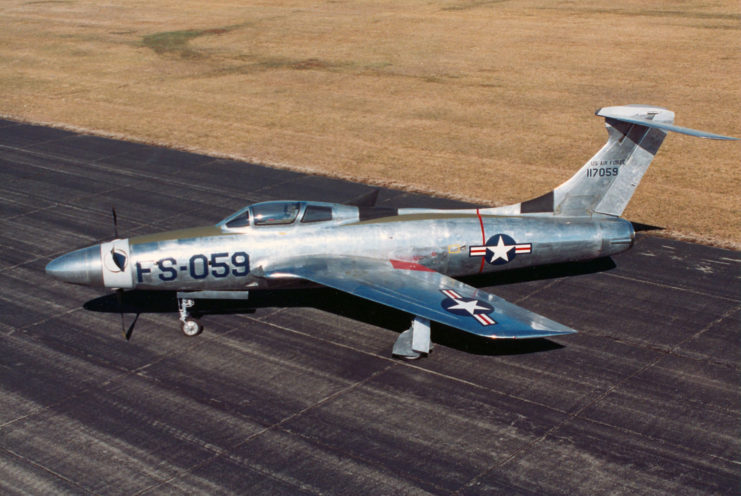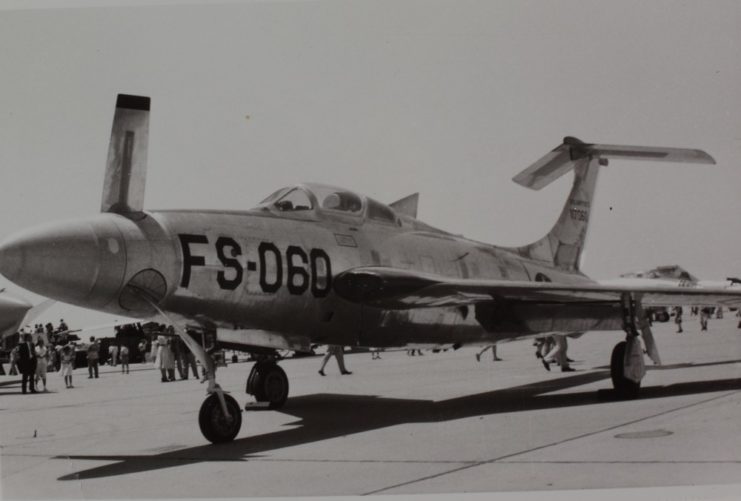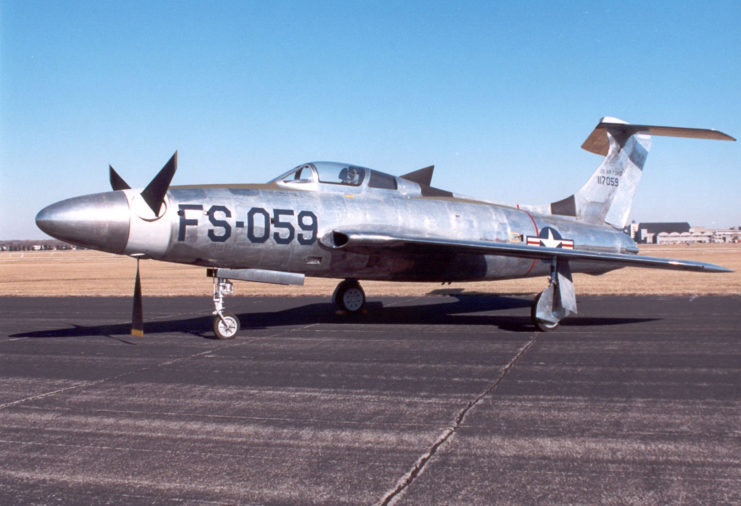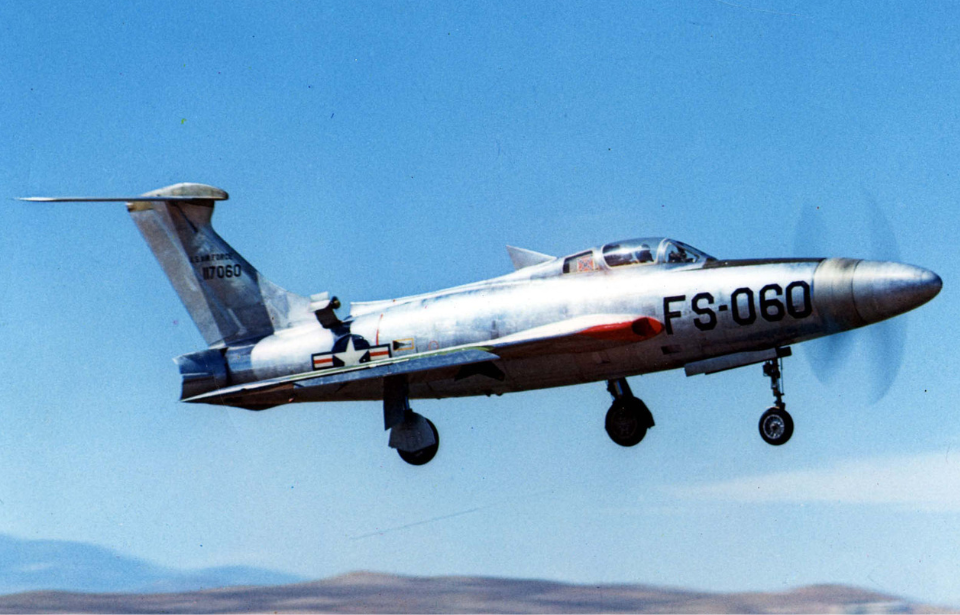The US Air Force has developed a number of experimental aircraft over the decades, but none was as interesting as the Republic XF-84H Thunderscreech. A derivative of the F-84 Thunderstreak, it was the “loudest aircraft ever built” – and among the most issue-riddled. As a result, it was canceled after just a handful of test flights.
Developing a new type of carrier aircraft

The Republic XF-84H Thunderscreech began life as Project 3347. It was developed following a US Navy request for an aircraft that could operate from aircraft carriers without the need for a catapult. This meant it needed to achieve jet speeds, while also featuring the same low fuel consumption, long range and low landing speeds of propeller-driven aircraft.
Co-sponsored by the US Air Force’s Wright Air Development Center at Wright-Patterson Air Force Base, Ohio, the prototypes were originally designated “F-106.” They were subsequently re-designated the XF-84H, after the Republic F-84 Thunderstreak from which it was semi-derived.
When the Navy canceled its order, the XF-84H became a research aircraft for the Air Force’s Propeller Laboratory at Wright-Patterson AFB, with the aim now being to test subsonic propellers.
Republic XF-84H Thunderscreech specs

Before we get into what made the Republic XF-84H Thunderscreech so unique, let’s get the basics out of the way. The aircraft was 51.5 feet long, with a wingspan of 33.5 feet. It was powered by an Allison XT40-A-1 turboprop engine capable of producing 4,360 kW of power and a range of 2,000 miles. Also notable was the XF-84H’s airframe, which was a modified version of Republic F-84 Thunderstreak’s.
The turboprop engine was located behind the cockpit and connected to the nose-mounted propeller via an extension shaft, which spun faster than the speed of sound. This allowed the XF-84H to have a projected speed of Mach 1.18, which meant it became the only turboprop-powered aircraft to feature an afterburner. While capable of providing an additional 5,390 kW of power, it was never used.
Finally, the XF-84H was the first aircraft to feature a retractable and extendable ram air turbine, which swung out to provide electrical and hydraulic power in the event of engine failure.
Issues with the Republic XF-84H Thunderscreech

The Republic XF-84H Thunderscreech was plagued with issues that made it dangerous to fly.
Similar to aircraft equipped with the T40 – North American XA2J Super Savage and Douglas A2D Skyshark – its shafts suffered from aggressive vibrations when traveling at high speeds. In addition to this, the engine required a 30-minute warm-up period, which made it unsuited for use in combat situations.
Given the XF-84H’s speed, special propellers were needed – and this is where the majority of the problems arose. The torque produced by the propellers destabilized the aircraft, with it wanting to spin around them as a result. Attempts were made to rectify this, including the addition of a triangular fin behind the cockpit, but the designers were never able to fully fix the issue.
All this, paired with high maintenance requirements, various equipment failures and the inability for the XF-84H to actually hit the speeds it was designed to made it a particularly problematic aircraft.
Testing the ‘loudest aircraft ever built’
On July 22, 1955, the XF-84H Thunderscreech underwent its first of 12 test flights at Edwards Air Force Base, California. Almost immediately, the aforementioned issues were noted.
Eleven of the flights ended in emergency landings, with one of the test pilots, Lin Hendrix, refusing to re-enter the cockpit after his first flight, saying, “It never flew over 450 knots indicated, since at that speed, it developed an unhappy practice of ‘snaking,’ apparently losing longitudinal stability.”
The pilots weren’t the only ones affected by the XF-84H’s issues. The amount of noise it emitted also proved to be problematic for those stationed on the ground. Loud enough to be heard from 25 miles away, the aircraft created a sonic boom strong enough to knock down anyone standing close by. On top of that, there were reports of ground crews suffering severe headaches and nausea whenever it took off down the runway.
The “loudest aircraft ever built” also affected the control towers – in particular, sensitive components that were vulnerable to the vibrations produced by its subsonic propellers. This forced crews to communicate with the XF-84H crew along the flight line via light signals.
More from us: Pave Low: Converting Search and Rescue Helicopters for Use In Special Ops
Given these issues, the Republic XF-84H Thunderscreech never made it past its Phase I proving flights. In September 1956, the Air Force canceled the program. Of the two prototypes, only one survived and is currently on display at the National Museum of the United States Air Force at Wright-Patterson Air Force Base.
